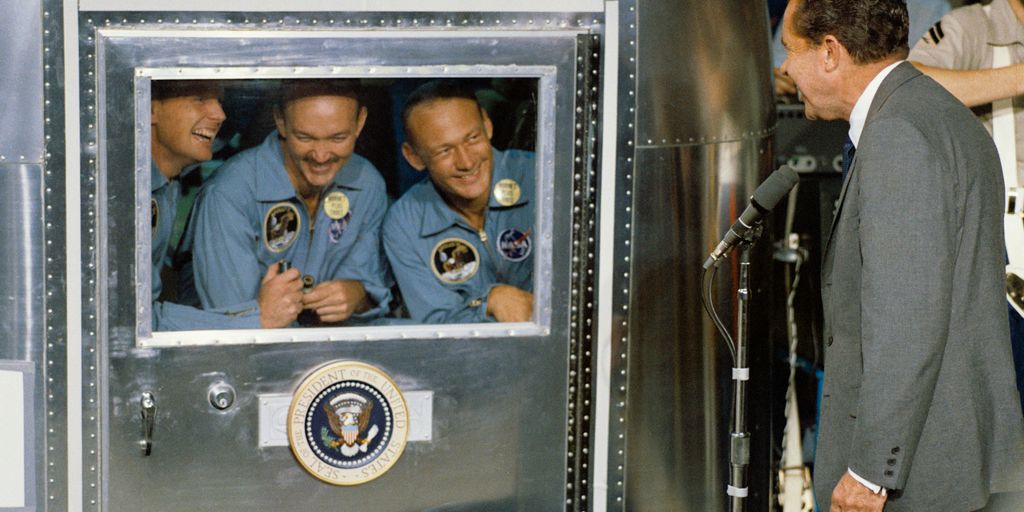Politics
A Closer Look at the 2016 Vice Presidential Candidates: Who Were They and What Impact Did They Have?

The 2016 election brought a lot of attention to the vice presidential candidates, Tim Kaine and Mike Pence. These two men played significant roles in their respective campaigns, and their backgrounds and performances were closely scrutinized. Understanding who they are and how they influenced the election can give us insights into the political landscape of that time and its lasting effects.
Key Takeaways
- Tim Kaine, a seasoned senator, brought experience in foreign relations to the Clinton campaign.
- Mike Pence, the Indiana governor, balanced Trump’s fiery personality with a calm demeanor during debates.
- The vice presidential debate highlighted key differences in policy and approach between the two candidates.
- Public perception played a significant role, with media coverage shaping how voters viewed Kaine and Pence.
- The 2016 vice presidential candidates set a precedent for future elections regarding the importance of the VP role.
Overview Of The 2016 Vice Presidential Candidates
It’s easy to forget, but the VP pick is a HUGE deal. In 2016, the choices were Tim Kaine and Mike Pence. Let’s take a quick look at who they were before the election.
Tim Kaine’s Background and Experience
Tim Kaine, Hillary Clinton’s running mate, brought a wealth of experience to the ticket. He wasn’t some newbie. Before becoming a U.S. Senator for Virginia in 2012, Kaine had served as governor of Virginia from 2006 to 2010. He also served as Lieutenant Governor and Mayor of Richmond. His background was generally seen as moderate, appealing to a broad range of voters. He also served on the Foreign Relations Committee.
Mike Pence’s Political Journey
Mike Pence, Donald Trump’s pick, had a different path. Before becoming Trump’s running mate, he was the Governor of Indiana. Prior to that, he served in the House of Representatives for a number of years. Pence was seen as a staunch conservative, meant to reassure the Republican base about Trump. He was known for his calm demeanor and conservative principles. He was meant to be an emotional counterbalance to Trump.
The Role of Vice Presidential Candidates in Elections
The VP pick isn’t just some formality. It can really matter. The VP candidate can:
- Energize a specific part of the voter base.
- Help to shore up a weakness of the presidential candidate.
- Be ready to take over the presidency if something happens.
As Joel Goldstein, a law professor, said, it reminds people of the importance of the candidates and whether they are appropriate presidential successors based on their experience, skill, character, and substantive views.
Key Issues Addressed During The Campaign
Healthcare and Education Policies
Healthcare was a HUGE topic in 2016, no surprise there. The Affordable Care Act (ACA), or Obamacare, was constantly under fire. Trump and Pence promised to repeal and replace it, but didn’t really give a super clear plan of what that replacement would look like. Kaine and Clinton, on the other hand, wanted to defend and expand the ACA. Education was also discussed, but it took a backseat to healthcare. There were talks about college affordability and student loan debt, but nothing super concrete. Here’s a quick rundown:
- Healthcare: Repeal/Replace (Trump/Pence) vs. Defend/Expand (Clinton/Kaine)
- Education: College affordability, student loan debt
- Vouchers: Trump supported school vouchers, Kaine opposed them.
Foreign Relations and National Security
Foreign policy was another big one, especially with all the stuff happening in the Middle East. Trump’s "America First" approach was a major theme. He questioned a lot of existing alliances and wanted to renegotiate trade deals. Pence usually tried to soften Trump’s more extreme statements, but the overall message was pretty clear: the US needed to focus on its own interests. Kaine and Clinton took a more traditional approach, emphasizing alliances and international cooperation. They were critical of Trump’s isolationist tendencies. The candidates had very different views on national security.
Economic Strategies and Job Creation
Both sides talked a lot about the economy, but they had very different ideas about how to make things better. Trump and Pence promised to bring back jobs by cutting taxes and regulations. They argued that this would encourage businesses to invest and create jobs. Kaine and Clinton focused on investing in infrastructure, education, and clean energy. They also wanted to raise the minimum wage and make it easier for workers to organize. Here’s a quick comparison of their economic platforms:
- Trump/Pence: Tax cuts, deregulation, bring back manufacturing jobs
- Clinton/Kaine: Infrastructure investment, clean energy, raise minimum wage
- Trade: Trump wanted to renegotiate trade deals, Clinton wanted to improve existing ones
The Vice Presidential Debate Highlights

The 2016 vice presidential debate was a pretty big deal. It was the only time Tim Kaine and Mike Pence went head-to-head, and people were watching to see how they’d perform. It’s interesting to look back and see what stuck out.
Pence’s Calm Demeanor vs. Kaine’s Energy
One of the most noticeable things about the debate was the difference in style between Pence and Kaine. Pence came across as calm and collected, while Kaine was much more energetic and aggressive. Some thought Pence’s demeanor was reassuring, while others found Kaine’s energy more engaging. It really depended on what you were looking for in a VP.
Key Moments and Exchanges
There were a few moments that everyone was talking about after the debate. Kaine frequently attacked Trump’s past controversies, while Pence tried to deflect and focus on Hillary Clinton’s record. The interruptions were pretty constant, and the moderator struggled to keep things under control. It wasn’t exactly a smooth discussion, but it definitely had some memorable debate moments.
Impact of the Debate on Voter Perception
So, did the debate actually change anyone’s mind? It’s hard to say for sure. Some polls suggested that Pence was seen as the winner, but it’s not clear if that translated into more votes for the Trump-Pence ticket. Debates can be important, but they’re just one piece of the puzzle when it comes to voter perception.
Public Perception of The Candidates
Polls and Approval Ratings
Public opinion is a fickle thing, isn’t it? When it came to Kaine and Pence, the polls painted a pretty interesting picture. It’s tough to say exactly how much the VP candidates sway voters, but their approval ratings definitely gave us some insight into how they were received. Generally, approval ratings are a good indicator of public sentiment.
| Candidate | Pre-Debate Approval | Post-Debate Approval | Change |
|---|---|---|---|
| Tim Kaine | 38% | 41% | +3% |
| Mike Pence | 45% | 47% | +2% |
Media Coverage and Analysis
The media? Oh boy, where do we even start? It felt like every news outlet had an opinion on Kaine and Pence. Some focused on Kaine’s energetic debate style, while others highlighted Pence’s calm demeanor. The media coverage definitely played a role in shaping public perception. You had some outlets praising Pence for his ability to defend Trump, while others criticized Kaine for being too aggressive. It’s all about perspective, I guess. The recent tariff cuts also influenced the economic narrative during the election.
Voter Engagement and Interest
Did people actually care about the VP candidates? That’s the million-dollar question. I think a lot of voters saw them as extensions of the presidential candidates, but there were definitely some who were genuinely interested in what Kaine and Pence had to say. Voter engagement is key, and here are some factors that influenced it:
- Debate performances: A strong showing could definitely grab people’s attention.
- Campaign rallies: Seeing the candidates in person made a difference for some.
- Social media: Gotta love those Twitter debates, right?
The Legacy of The 2016 Vice Presidential Candidates
Influence on Future Elections
The 2016 election, with Tim Kaine’s experience and Mike Pence on the tickets, offered some interesting lessons. One key takeaway is the amplified importance of the VP pick as a potential ‘President-in-waiting’. The health and age of presidential candidates have made the choice of running mate more critical than ever. We’re seeing campaigns put more thought into selecting VPs who can reassure voters about the stability and future direction of the country.
Lessons Learned for Future Candidates
Future VP candidates can learn a lot from Kaine and Pence. Here are a few points:
- Authenticity matters: Voters respond well to candidates who appear genuine and relatable, even if they disagree on policy.
- Debate preparation is key: The VP debate is a chance to shine (or stumble). Candidates need to be ready to defend their running mate and articulate their vision.
- Know your role: The VP candidate’s job is to support the top of the ticket, not overshadow them. Balancing loyalty with independent thought is a must.
The Importance of Vice Presidential Roles
It’s easy to overlook the VP role, but it’s super important. The VP is next in line, of course, but they also play a big part in shaping policy and connecting with different groups of voters. The 2016 election reminded everyone that national security is a heartbeat away from the presidency, and that the person in that role needs to be ready for anything. The VP can be a bridge between the President and Congress, or a key advisor on foreign policy. It’s a job that demands experience, skill, and good judgment.
Comparative Analysis of Kaine and Pence
Political Ideologies and Platforms
Tim Kaine and Mike Pence represented distinct ideological viewpoints within the American political landscape. Kaine, as the Democratic nominee, generally supported policies aligned with the Democratic Party platform, emphasizing social justice, environmental protection, and government regulation to address economic inequality. Pence, on the other hand, embodied conservative principles, advocating for limited government intervention, lower taxes, and socially conservative policies. This difference was evident in their stances on issues ranging from healthcare to immigration.
Debate Performance Comparison
The vice-presidential debate offered a direct comparison of Kaine and Pence’s communication styles and debate skills. Kaine adopted an aggressive approach, frequently interrupting and challenging Pence on Donald Trump’s controversial statements. Pence, in contrast, maintained a calm and composed demeanor, often deflecting Kaine’s attacks and pivoting to positive messages about the Trump campaign. Some observers felt Kaine’s energy came across as abrasive, while Pence’s calm demeanor was perceived as more presidential. It really came down to style versus substance, and how each played with the audience.
Voter Demographics and Support
Kaine and Pence appealed to different segments of the electorate based on their political ideologies and personal backgrounds. Kaine’s presence on the ticket was intended to solidify support among traditional Democratic constituencies, including minority voters, urban residents, and younger voters. Pence aimed to mobilize the Republican base, particularly white evangelical Christians and socially conservative voters in rural areas. Understanding these voter demographics is key to understanding the overall strategy of each campaign. The following table summarizes the key demographics each candidate aimed to attract:
| Candidate | Key Demographic Groups |
|---|---|
| Tim Kaine | Minority voters, urban residents, young voters, college-educated voters |
| Mike Pence | White evangelical Christians, social conservatives, rural voters, older voters |
Impact of The 2016 Vice Presidential Candidates
Effect on Presidential Candidates’ Campaigns
The selection of Tim Kaine and Mike Pence as running mates undeniably influenced the trajectory of the 2016 presidential campaigns. Kaine, with his extensive political background, was intended to solidify support among moderate voters and provide a counterweight to Trump’s unconventional style. Pence, on the other hand, aimed to reassure the Republican base and appeal to evangelical voters who might have been wary of Trump. The vice-presidential picks served as strategic moves to broaden appeal and address specific voter concerns.
Long-term Political Implications
The 2016 election had lasting effects on the political landscape, and the vice-presidential candidates played a role in shaping these implications. Pence’s subsequent role as Vice President solidified his position as a leading figure within the Republican Party, potentially influencing the party’s direction in the years that followed. Kaine’s continued service in the Senate also provided a platform for him to advocate for Democratic policies and shape the political landscape. The election highlighted the importance of vice-presidential candidates in defining party platforms and future leadership.
Role in Shaping Party Policies
Both Kaine and Pence brought distinct policy perspectives to their respective campaigns, contributing to the broader policy debates of the election. Pence’s conservative stances on social issues and fiscal policy helped to solidify the Republican platform, while Kaine’s focus on issues such as healthcare and education reflected Democratic priorities. The vice-presidential candidates served as key voices in articulating party policies and engaging voters on important issues. Here are some examples:
- Pence advocated for tax cuts and deregulation.
- Kaine emphasized affordable healthcare and investment in education.
- Both candidates addressed foreign policy challenges and national security concerns.
Final Thoughts on the 2016 Vice Presidential Candidates
Looking back at the 2016 vice presidential candidates, Tim Kaine and Mike Pence, it’s clear they both played significant roles in their campaigns. Kaine, with his Senate experience, brought a steady presence to Clinton’s ticket, while Pence offered a calm counterbalance to Trump’s more fiery approach. Their debate showcased their contrasting styles—Kaine’s energetic challenge versus Pence’s composed defense. While many voters might overlook the vice presidential candidates, their potential to step into the presidency makes their qualifications and character worth considering. Ultimately, both candidates left their mark, shaping the narrative of the election and influencing how voters viewed their running mates.
Frequently Asked Questions
Who were the vice presidential candidates in 2016?
The main candidates were Tim Kaine from the Democratic Party and Mike Pence from the Republican Party.
What were Tim Kaine’s main qualifications?
Tim Kaine served as a U.S. Senator and was also the Governor of Virginia before running for vice president.
How did Mike Pence’s experience help his campaign?
Mike Pence was the Governor of Indiana and had been in politics for many years, which gave him a lot of experience.
Why are vice presidential candidates important?
They can influence voters and help their presidential candidates by bringing in different supporters.
What were the major topics discussed during the campaign?
Key issues included healthcare, education, foreign relations, and the economy.
What impact did the vice presidential debate have?
The debate helped shape how voters viewed both candidates and influenced their opinions on the presidential candidates.
-

 Technology6 days ago
Technology6 days agoWhat to Know Before Switching Cell Phone Network Services in 2025
-

 Press Release6 days ago
Press Release6 days agoGlobal Compound Feeds and Additives Industry Report: Market Expansion and Competitive Insights to 2035
-

 Press Release5 days ago
Press Release5 days agoCrypto WINNAZ Launches First On-Chain Yield Engine for Meme Coins, Enabling 20x–300x Returns
-

 Press Release2 days ago
Press Release2 days agoBellarium ($BEL) Price Prediction: Could It Hit $5 by 2026?
-

 Press Release2 days ago
Press Release2 days agoWhy Alaxio (ALX) Is a Top Pick for Smart Crypto Investors
-

 Business1 day ago
Business1 day agoHow Managed IT Solutions Help Small Teams Compete at Enterprise Scale
-

 Press Release2 hours ago
Press Release2 hours agoFill-Finish Pharmaceutical Contract Manufacturing Market Expected to Flourish Amid Biopharmaceutical Boom and Global Outsourcing Trend by 2035
-

 Press Release2 hours ago
Press Release2 hours agoCat Food Market Forecast 2035: Natural Ingredients, Pet Wellness to Lead the Way










